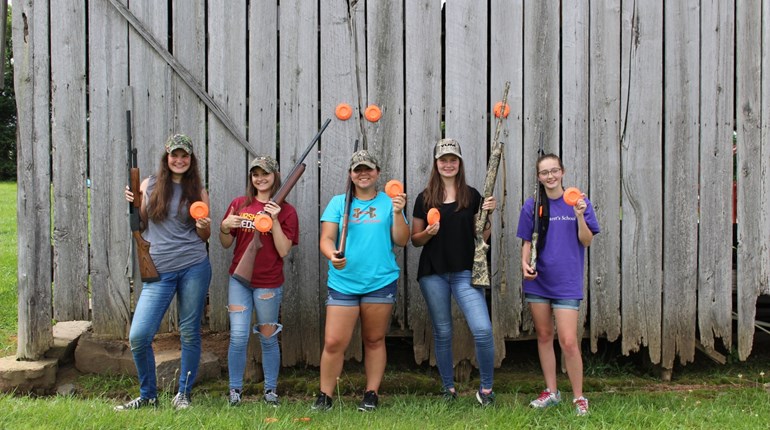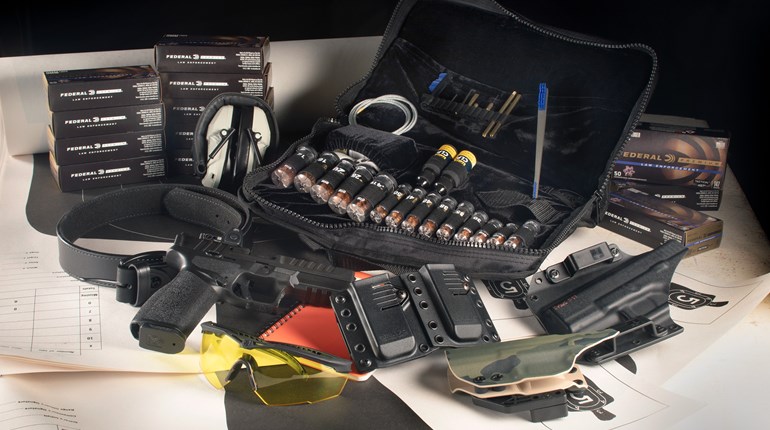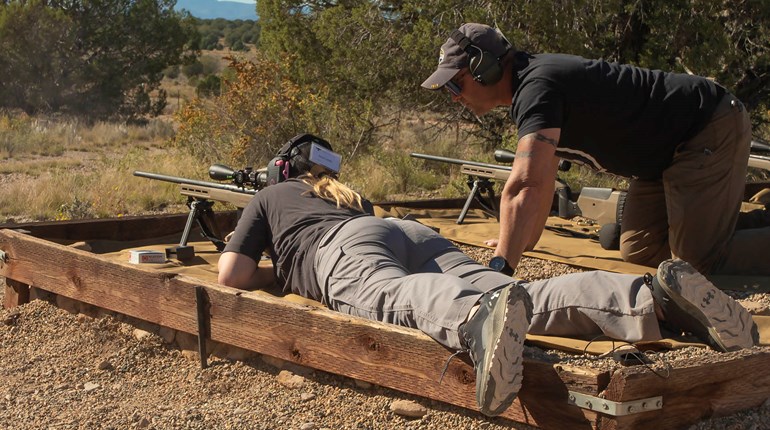
So you've decided to mentor a new shooter who's interested in learning about the shotgun sports. Here are some tips to make it safe, easy and fun for everyone.
1. Firearm safety is paramount.
Coach and pupil will be calm and confident if all safety protocols are observed. The three rules of firearm safety should be ingrained and practiced...even when you think no one is looking.
· ALWAYS keep the gun pointed in a safe direction.
· ALWAYS keep your finger off the trigger until you are ready to shoot.
· ALWAYS keep the gun unloaded until ready to use.
2. A fitting gun is a winning gun.
A properly fitting gun will encourage practice and promote success in the sport. Some things to consider include:
· Weight: The weight should be great enough to not dole out abuse but light enough to easily change the momentum of the gun. Consider purchasing a magnetic muzzle rest to use between stations/posts.
· Recoil: The perception of recoil can be less in gas-operated semi-autos than in over/under shotguns or inertia-driven semi-autos. Consider a barrel with ports, as it will reduce muzzle rise...but be aware that it may increase noise.
· Comb height: Experiment with comb height using moleskin plus; slowly build up the comb until the cheek is resting on the stock without having to move the head down to the gun. Note that women may need higher combs since they tend to have longer necks in proportion to their bodies than men do.
· Length of pull: The trigger finger should reach the trigger with the butt of the gun securely in the pocket of the shoulder.
3. Assign homework.
Practicing the fundamentals at home is easy and inexpensive. Sample homework assignments include:
· Position: Find your natural point of alignment and work on getting into position consistently. A favorable stance fuses balance, relaxation and comfort. A favorable position connects the natural point of alignment with the break point.
· Mount: Practice mounting the gun by bringing it up to the cheek in one fluid motion. Resist the temptation to bring the cheek down to the gun. Remember your eye is the rear sight; it should be in the same position each time you mount the gun for consistent results.
· Vision: Use secondary vision to look for movement; once movement is seen, put a hard focus with your primary vision. Practice the transition from secondary to primary vision by watching for squirrels in the yard. For more information, read about Joan Vickers' "quiet eye."
· Movement: Practice moving the gun along the line where the wall and the ceiling meet. The upper and lower body should move in unison; if you bind up, then your stance is off.
· Develop a pre-shot routine that is simple, relaxing and includes visualization of the next shot.
4. Eye dominance.
Determine the shooter’s eye dominance before they fire the first shot. Cross-dominance, in which the eye opposite the dominant hand is dominant, is more common than you might think. If your athlete is cross-dominant you have a few choices:
· Shoot with the non-dominant hand so the dominant eye is in use.
· Shoot with the dominant hand, but obstruct the optical center of the dominant eye by putting lip balm or clear tape on the eye protection. Remember to leave the peripheral vision clear.
5. Make it fun.
· Start with the easiest station or post. In Skeet, start on low 7, since it requires no lateral movement. In Trap, lock the trap to throw straightaway targets from post 3; then progress outward to the extreme angle targets from posts 1 and 5.
· Incorporate games in your training like "PIG" or "Annie Oakley."
6. Keep it positive.
· Give instructions in the positive. For example, instead of saying, “Don’t stop the gun,” try “Remember to follow through.”
· Redirect negative comments with objective ones. If your athlete says, “I’m terrible,” simply remind them of the forgotten fundamental and how to correct it.
7. Be patient.
· Introduce a new concept and allow time to master it before moving on to another one. You have had years to perfect your game, and you have a lot of information to share, but try to refrain from over instructing.
· Refrain from nit-picking. It is common to see a reduction in accuracy while learning a new skill, so focus on the task at hand and try not to be overly critical.
· Speed will come with time. Encourage the efficient execution of fundamentals instead of rushing the shot. National Shotgun Coach Trainer Don Sipes reminds us, “There are no extra points for time.”
8. Be polite.
Only offer advice to those seeking it. In the words of Dave Myers, “Remember Socrates. He ran around the country giving everyone free advice, and they poisoned him.”
9. All ammunition is not created equal.
Once you find a load the athlete likes, do her a favor and stick with it. This helps to eliminate one variable from training; a consistent load will perform predictably in the gun.
10. Learn from the best.
Visit nrainstructors.org and register for the next available NRA Shotgun Coach (Level 1) course in your area. The course is approved by the governing bodies of all five shotgun disciplines which is a tremendous accomplishment. I was fortunate enough to take the course at the Arlington-Fairfax Chapter of the Izaak Walton League in Centreville, Virginia. Shotgun Coach School will prepare you to be a capable Coach for beginners in Trap, Skeet, International Trap, International Skeet, as well as Sporting Clays.







































